#American Electrical Engineers
Text
CE Code Section 10: Grounding and Bonding
“Heh,” Morgan says, looking at where Alex is clutching at their hand for dear life. “Good thing that was low voltage.”
Alex very distinctly wants to scream but they’re interrupted by the sound of a metal door popping open.
Morgan’s face splits into a grin, shaking free of Alex’s grip they rush with their minions to grab what they came here for.
⚡⚡⚡
Or, Safety is not a joke, Morgan plays a little fast and loose, Alex is going more grey by the day
#bread talk#my fic#s & d tier#alex s tier#morgan d tier#this should count towards your osha 10 hr training (joke)#no literally there are footnotes you will Learn#trust me im an engineer#ee posting#i hope to make any american who has to do the research i did very hard by putting a result about some gays in the search#anyway ce code is canadian electrical code#which i read for this fic#if i can read another countries electrical code u can read this (joke)#breadboarding
7 notes
·
View notes
Text

Juri in the cover of the first of the Street Fighter IV comics.
#C.Viper#capcom#street fighter series#SF4#Crimson Viper#American#Juri Han#Ju-ri Han#South Korean#Comic books#Comic book covers#SF4 comics#Electric Gloves#Feng Shui Engine#the Dark Chun-Li
9 notes
·
View notes
Link
The article "North American XB-70 Valkyrie — America’s Cold War Supersonic Speed Bomber" by Friedrich Seiltgen, published on The Armory Life, discusses the history and development of the North American Aviation XB-70 Valkyrie, a planned supersonic strategic bomber for the United States Air Force. Intended to replace the Boeing B-52 Stratofortress and the Convair B-58 Hustler, the Valkyrie was designed during the Cold War to fly faster and higher, evading interceptor aircraft. The program, initiated in the mid-1950s, was ultimately canceled in 1961 due to advancements in Soviet surface-to-air missile technology and the rise of cost-effective Intercontinental Ballistic Missiles (ICBMs). The article highlights the Valkyrie's ambitious design goals, including a proposed cruising speed of Mach 3 and an operational altitude of 70,000-75,000 feet. Despite the cancellation, two prototypes were built, contributing valuable data on supersonic flight, aerodynamics, and airplane propulsion. The Valkyrie program also faced a tragic incident in 1966 involving a collision with an F-104 Starfighter during a photo shoot, leading to the destruction of one prototype. The surviving XB-70 is now displayed at the National Museum of the United States Air Force.
#North American XB-70 Valkyrie#supersonic bomber#Cold War era#Mach 3 speed#strategic reconnaissance#nuclear deterrent#B-58 Hustler#B-52 Stratofortress#high-altitude flight#Wright-Patterson Air Force Base#General Electric YJ93 engines#delta wing design#aeronautical engineering#aviation history#aerodynamic heating#experimental aircraft.
0 notes
Text
The Best News of Last Year - 2023 Edition
Welcome to our special edition newsletter recapping the best news from the past year. I've picked one highlight from each month to give you a snapshot of 2023. No frills, just straightforward news that mattered. Let's relive the good stuff that made our year shine.
January - London: Girl with incurable cancer recovers after pioneering treatment

A girl’s incurable cancer has been cleared from her body after what scientists have described as the most sophisticated cell engineering to date.
2. February - Utah legislature unanimously passes ban on LGBTQ conversion therapy

The Utah State Legislature has unanimously approved a bill that enshrines into law a ban on LGBTQ conversion therapy.
3. March - First vaccine for honeybees could save billions

The United States Department of Agriculture (USDA) has approved the world’s first-ever vaccine intended to address the global decline of honeybees. It will help protect honeybees from American foulbrood, a contagious bacterial disease which can destroy entire colonies.
4. April - Fungi discovered that can eat plastic in just 140 days

Australian scientists have successfully used backyard mould to break down one of the world's most stubborn plastics — a discovery they hope could ease the burden of the global recycling crisis within years.
5. May - Ocean Cleanup removes 200,000th kilogram of plastic from the Pacific Ocean

The Dutch offshore restoration project, Ocean Cleanup, says it has reached a milestone. The organization's plastic catching efforts have now fished more than 200,000 kilograms of plastic out of the Pacific Ocean, Ocean Cleanup said on Twitter.
6. June - U.S. judge blocks Florida ban on care for trans minors in narrow ruling, says ‘gender identity is real’

A federal judge temporarily blocked portions of a new Florida law that bans transgender minors from receiving puberty blockers, ruling Tuesday that the state has no rational basis for denying patients treatment.
7. July - World’s largest Phosphate deposit discovered in Norway

A massive underground deposit of high-grade phosphate rock in Norway, pitched as the world’s largest, is big enough to satisfy world demand for fertilisers, solar panels and electric car batteries over the next 50 years, according to the company exploiting the resource.
8. August - Successful room temperature ambient-pressure magnetic levitation of LK-99

If the claim by Sukbae Lee and Ji-Hoon Kim of South Korea’s Quantum Energy Research Centre holds up, the material could usher in all sorts of technological marvels, such as levitating vehicles and perfectly efficient electrical grids.
9. September - World’s 1st drug to regrow teeth enters clinical trials

The ability to regrow your own teeth could be just around the corner. A team of scientists, led by a Japanese pharmaceutical startup, are getting set to start human trials on a new drug that has successfully grown new teeth in animal test subjects.
10. October - Nobel Prize goes to scientists behind mRNA Covid vaccines

The Nobel Prize in Physiology or Medicine has been awarded to a pair of scientists who developed the technology that led to the mRNA Covid vaccines. Professors Katalin Kariko and Drew Weissman will share the prize.
11. November - No cases of cancer caused by HPV in Norwegian 25-year olds, the first cohort to be mass vaccinated for HPV.
Last year there were zero cases of cervical cancer in the group that was vaccinated in 2009 against the HPV virus, which can cause the cancer in women.
12. December - President Biden announces he’s pardoning all convictions of federal marijuana possession

President Joe Biden announced Friday he's issuing a federal pardon to every American who has used marijuana in the past, including those who were never arrested or prosecuted.
------
And there you have it – a year's worth of uplifting news! I hope these positive stories brought a bit of joy to your inbox. As I wrap up this special edition, I want to thank all my supporters!
Buy me a coffee ❤️
Merry Christmas and Happy New Year!
6K notes
·
View notes
Text
Summer at International Ivy: Week 4 – Electrical Engineering with Makey-Makey
Week 4 (July 17th – 21st): Electrical Engineering (Ages 8-10)
Amogh had a great time learning the concepts of Electrical Engineering by experimenting with ‘Makey-Makey’, a circuit board kit that is used to connect any object (like banana, playdoh, spoon, toys etc) with computer, thereby transforming them into computer keys or mouse clicks. He had fun building flying saucer, piano, controllers…

View On WordPress
#American Mensa#educate#education#Electrical Engineering#gifted#gifted and talented#gifted education#gifted kids#International Ivy#Kids#learn#learning#learning is fun#Learning through STEM#Makey-Makey#MENSA#Mensa Kids#smart kids#STEAM#STEM#STEM Education#STEM Learning#Summer camp#summercamp#summercamp2023#summercamp23
0 notes
Text
1st gen mercenaries are real people from history
I'm just once again amazed at how witty and creative Valve were, when they were creating TF2 and its lore. "The 2nd generation are mercenaries from the classics, and who then is the 1st generation…OH LET'S MAKE ALL OF THEM REAL HISTORICAL PEOPLE!"
So we have:
"Billy the Kid" (an American outlaw and gunfighter of the Old West ) - Scout


Stonewall Jackson (was a general officer in the Confederate States Army) - Soldier


Abraham Lincoln (you know) - Pyro


Alfred Nobel (inventor of dynamite) - Demo


John Henry (an American folk hero) - Heavy


Nikola Tesla (inventor, electrical engineer, mechanical engineer, and futurist) - Engineer
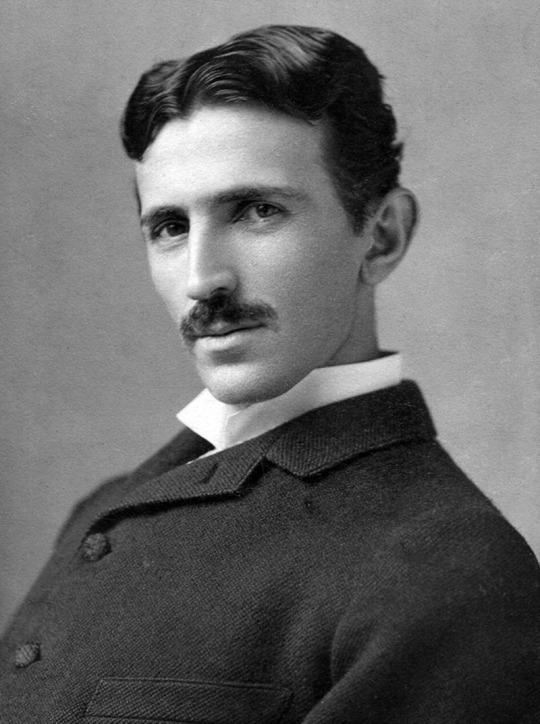
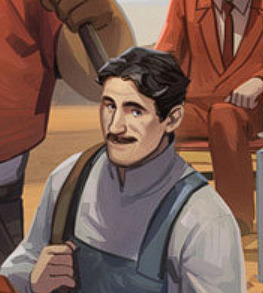
Sigmund Freud (yeah)- Medic
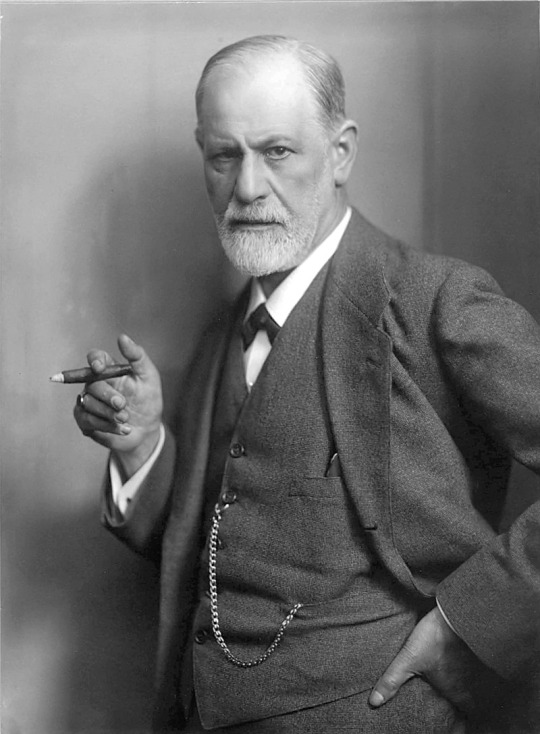

Davy Crockett - Sniper


Fu Manchu (cinema. media character; an archetype of the evil criminal genius) - Spy


For a long time, I ignored the first generation mercenaries, thinking that they were just anonymous people with no history. Later I found out that Abraham Lincoln was canonically a mercenary in TF2 and thought how funny it was. But I didn’t even realize that ALL the mercs of the first generation were real historical figures. This is most likely due to the fact that they are(mostly) figures of American folklore and history (and I’m not American).
In short, I just really like this idea: to make a team entirely consisting of references to folklore characters or real people.
#tf2#team fortress 2#tf2 scout#tf2 soldier#tf2 pyro#tf2 demoman#tf2 heavy#tf2 engineer#tf2 spy#tf2 medic#tf2 sniper#my text
2K notes
·
View notes
Text
Boeing’s deliberately defective fleet of flying sky-wreckage

I'm touring my new, nationally bestselling novel The Bezzle! Catch me TOMORROW (May 2) in WINNIPEG, then Calgary (May 3), Vancouver (May 4), Tartu, Estonia, and beyond!

Boeing's 787 "Dreamliner" is manufactured far from the company's Seattle facility, in a non-union shop in Charleston, South Carolina. At that shop, there is a cage full of defective parts that have been pulled from production because they are not airworthy.
Hundreds of parts from that Material Review Segregation Area (MRSA) were secretly pulled from that cage and installed on aircraft that are currently plying the world's skies. Among them, sections 47/48 of a 787 – the last four rows of the plane, along with its galley and rear toilets. As Moe Tkacik writes in her excellent piece on Boeing's lethally corrupt culture of financialization and whistleblower intimidation, this is a big ass chunk of an airplane, and there's no way it could go missing from the MRSA cage without a lot of people knowing about it:
https://prospect.org/infrastructure/transportation/2024-04-30-whistleblower-laws-protect-lawbreakers/
More: MRSA parts are prominently emblazoned with red marks denoting them as defective and unsafe. For a plane to escape Boeing's production line and find its way to a civilian airport near you with these defective parts installed, many people will have to see and ignore this literal red flag.
The MRSA cage was a special concern of John "Swampy" Barnett, the Boeing whistleblower who is alleged to have killed himself in March. Tkacik's earlier profile of Swampy paints a picture of a fearless, stubborn engineer who refused to go along to get along, refused to allow himself to become inured to Boeing's growing culture of profits over safety:
https://prospect.org/infrastructure/transportation/2024-03-28-suicide-mission-boeing/
Boeing is America's last aviation company and its single largest exporter. After the company was allowed to merge with its rival McDonnell-Douglas in 1997, the combined company came under MDD's notoriously financially oriented management culture. MDD CEO Harry Stonecipher became Boeing's CEO in the early 2000s. Stonecipher was a protege of Jack Welch, the man who destroyed General Electric with cuts to quality and workforce and aggressive union-busting, a classic Mafia-style "bust-out" that devoured the company's seed corn and left it a barren wasteland:
https://qz.com/1776080/how-the-mcdonnell-douglas-boeing-merger-led-to-the-737-max-crisis
Post-merger, Boeing became increasingly infected with MDD's culture. The company chased cheap, less-skilled labor to other countries and to America's great onshore-offshore sacrifice zone, the "right-to-work" American south, where bosses can fire uppity workers who balked at criminal orders, without the hassle of a union grievance.
Stonecipher was succeeded by Jim "Prince Jim" McNerney, ex-3M CEO, another Jack Welch protege (Welch spawned a botnet of sociopath looters who seized control of the country's largest, most successful firms, and drove them into the ground). McNerney had a cute name for the company's senior engineers: "phenomenally talented assholes." He created a program to help his managers force these skilled workers – everyone a Boeing who knew how to build a plane – out of the company.
McNerney's big idea was to get rid of "phenomenally talented assholes" and outsource the Dreamliner's design to Boeing's suppliers, who were utterly dependent on the company and could easily be pushed around (McNerney didn't care that most of these companies lacked engineering departments). This resulted in a $80b cost overrun, and a last-minute scramble to save the 787 by shipping a "cleanup crew" from Seattle to South Carolina, in the hopes that those "phenomenally talented assholes" could save McNerney's ass.
Swampy was part of the cleanup crew. He was terrified by what he saw there. Boeing had convinced the FAA to let them company perform its own inspections, replacing independent government inspectors with Boeing employees. The company would mark its own homework, and it swore that it wouldn't cheat.
Boeing cheated. Swampy dutifully reported the legion of safety violations he witnessed and was banished to babysit the MRSA, an assignment his managers viewed as a punishment that would isolate Swampy from the criminality he refused to stop reporting. Instead, Swampy audited the MRSA, and discovered that at least 420 defective aviation components had gone missing from the cage, presumably to be installed in planes that were behind schedule. Swampy then audited the keys to the MRSA and learned that hundreds of keys were "floating around" the Charleston facility. Virtually anyone could liberate a defective part and install it into an airplane without any paper trail.
Swampy's bosses had a plan for dealing with this. They ordered Swampy to "pencil whip" the investigations of 420 missing defective components and close the cases without actually figuring out what happened to them. Swampy refused.
Instead, Swampy took his concerns to a departmental meeting where 12 managers were present and announced that "if we can’t find them, any that we can’t find, we need to report it to the FAA." The only response came from a supervisor, who said, "We’re not going to report anything to the FAA."
The thing is, Swampy wasn't just protecting the lives of the passengers in those defective aircraft – he was also protecting Boeing employees. Under Sec 38 of the US Criminal Code, it's a 15-year felony to make any "materially false writing, entry, certification, document, record, data plate, label, or electronic communication concerning any aircraft or space vehicle part."
(When Swampy told a meeting that he took this seriously because "the paperwork is just as important as the aircraft" the room erupted in laughter.)
Swampy sent his own inspectors to the factory floor, and they discovered "dozens of red-painted defective parts installed on planes."
Swampy blew the whistle. How did the 787 – and the rest of Boeing's defective flying turkeys – escape the hangar and find their way into commercial airlines' fleets? Tkacik blames a 2000 whistleblower law called AIR21 that:
creates such byzantine procedures, locates adjudication power in such an outgunned federal agency, and gives whistleblowers such a narrow chance of success that it effectively immunizes airplane manufacturers, of which there is one in the United States, from suffering any legal repercussions from the testimony of their own workers.
By his own estimation, Swampy was ordered to commit two felonies per week for six years. Tkacik explains that this kind of operation relies on a culture of ignorance – managers must not document their orders, and workers must not be made aware of the law. Whistleblowers like Swampy, who spoke the unspeakable, were sidelined (an assessment by one of Swampy's managers called him "one of the best" and finished that "leadership would give hugs and high fives all around at his departure").
Multiple whistleblowers were singled out for retaliation and forced departure. William Hobek, a quality manager who refused to "pencil whip" the missing, massive 47-48 assembly that had wandered away from the MRSA cage, was given a "weak" performance review and fired despite an HR manager admitting that it was bogus.
Another quality manager, Cynthia Kitchens, filed an ethics complaint against manager Elton Wright who responded to her persistent reporting of defects on the line by shoving her against a wall and shouting that Boeing was "a good ol’ boys’ club and you need to get on board." Kitchens was fired in 2016. She had cancer at the time.
John Woods, yet another quality engineer, was fired after he refused to sign off on a corner-cutting process to repair a fuselage – the FAA later backed up his judgment.
Then there's Sam Salehpour, the 787 quality engineer whose tearful Congressional testimony described more corner-cutting on fuselage repairs:
https://www.youtube.com/watch?v=PP0xhIe1LFE
Salehpour's boss followed the Boeing playbook to the letter: Salehpour was constantly harangued and bullied, and he was isolated from colleagues who might concur with his assessment. When Salehpour announced that he would give Congressional testimony, his car was sabotaged under mysterious circumstances.
It's a playbook. Salehpour's experience isn't unusual at Boeing. Two other engineers, working on the 787 Organization Designation Authorization, held up production by insisting that the company fix the planes' onboard navigation computers. Their boss gave them a terrible performance review, admitting that top management was furious at the delays and had ordered him to punish the engineers. The engineers' union grievance failed, with Boeing concluding that this conduct – which they admitted to – didn't rise to the level of retaliation.
As Tkacik points out, these engineers and managers that Boeing targeted for intimidation and retaliation are the very same staff who are supposed to be performing inspections of behalf of the FAA. In other words, Boeing has spent years attacking its own regulator, with total impunity.
But it's not just the FAA who've failed to take action – it's also the DOJ, who have consistently declined to bring prosecutions in most cases, and who settled the rare case they did bring with "deferred prosecution agreements." This pattern was true under Trump's DOJ and continued under Biden's tenure. Biden's prosecutors have been so lackluster that a federal judge "publicly rebuked the DOJ for failing to take seriously the reputational damage its conduct throughout the Boeing case was inflicting on the agency."
Meanwhile, there's the AIR21 rule, a "whistleblower" rule that actually protects Boeing from whistleblowers. Under AIR21, an aviation whistleblower who is retaliated against by their employer must first try to resolve their problem internally. If that fails, the whistleblower has only one course of action: file an OSHA complaint within 90 days (if HR takes more than 90 days to resolve your internal complaint, you can no have no further recourse). If you manage to raise a complaint with OSHA, it is heard by a secret tribunal that has no subpoena power and routinely takes five years to rule on cases, and rules against whistleblowers 97% of the time.
Boeing whistleblowers who missed the 90-day cutoff have filled the South Carolina courts with last-ditch attempts to hold the company to account. When they lose these cases – as is routine, given Boeing's enormous legal muscle and AIR21's legal handcuffs – they are often ordered to pay Boeing's legal costs.
Tkacik cites Swampy's lawyer, Rob Turkewitz, who says Swampy was the only one of Boeing's whistleblowers who was "savvy, meticulous, and fast-moving enough to bring an AIR 21 case capable of jumping through all the hoops" to file an AIR21 case, which then took seven years. Turkewitz calls Boeing South Carolina "a criminal enterprise."
That's a conclusion that's hard to argue with. Take Boeing's excuse for not producing the documentation of its slapdash reinstallation of the Alaska Air door plug that fell off its plane in flight: the company says it's not criminally liable for failing to provide the paperwork, because it never documented the repair. Not documenting the repair is also a crime.
You might have heard that there's some accountability coming to the Boeing boardroom, with the ouster of CEO David Calhoun. Calhoun's likely successor is Patrick Shanahan, whom Tkacik describes as "the architect of the ethos that governed the 787 program" and whom her source called "a classic schoolyard bully."
If Shanahan's name rings a bell, it might be because he was almost Trump's Secretary of Defense, but that was derailed by the news that he had "emphatically defended" his 17 year old son after the boy nearly beat his mother to death with a baseball bat. Shanahan is presently CEO of Spirit Aerospace, who made the door-plug that fell out of the Alaska Airlines 737 Max.
Boeing is a company where senior managers only fail up and where whistleblowers are terrorized in and out of the workplace. One of Tkacik's sources noticed his car shimmying. The source, an ex-787 worker who'd been fired after raising safety complaints, had tried to bring an AIR21 complaint, but withdrew it out of fear of being bankrupted if he was ordered to pay Boeing's legal costs. When the whistleblower pulled over, he discovered that two of the lug-nuts had been removed from one of his wheels.
The whistleblower texted Tkcacik to say (not for the first time): "If anything happens, I'm not suicidal."
Boeing is a primary aerospace contractor to the US government. It's clear that its management – and investors – consider it too big to jail. It's also clear that they know it's too big to fail – after all, the company did a $43b stock buyback, then got billions in a publicly funded buyback.
Boeing is, effectively, a government agency that is run for the benefit of its investors. It performs its own safety inspections. It investigates its own criminal violations of safety rules. It loots its own coffers and then refills them at public expense.
Meanwhile, the company has filled our skies with at least 420 airplanes with defective, red-painted parts that were locked up in the MRSA cage, then snuck out and fitted to an airplane that you or someone you love could fly on the next time you take your family on vacation or fly somewhere for work.

If you'd like an essay-formatted version of this post to read or share, here's a link to it on pluralistic.net, my surveillance-free, ad-free, tracker-free blog:
https://pluralistic.net/2024/05/01/boeing-boeing/#mrsa

Image:
Tom Axford 1 (modified)
https://commons.wikimedia.org/wiki/File:Blue_sky_with_wisps_of_cloud_on_a_clear_summer_morning.jpg
CC BY-SA 4.0
https://creativecommons.org/licenses/by-sa/4.0/deed.en
--
Clemens Vasters (modified)
https://commons.wikimedia.org/wiki/File:N7379E_-_Boeing_737_MAX_9.jpg
CC BY 2.0
https://creativecommons.org/licenses/by/2.0/deed.en
#pluralistic#mrsa#Material Review Segregation Area#787#dreamliner#swampy#faa#marking your own homework#monopolies#AS9100#Cynthia Kitchens#Sam Salehpour#737 max#ntsb#David Calhoun#boeing#whistleblowers#aviation#safety#John Barnett#maureen tkacik#Patrick Shanahan
745 notes
·
View notes
Text
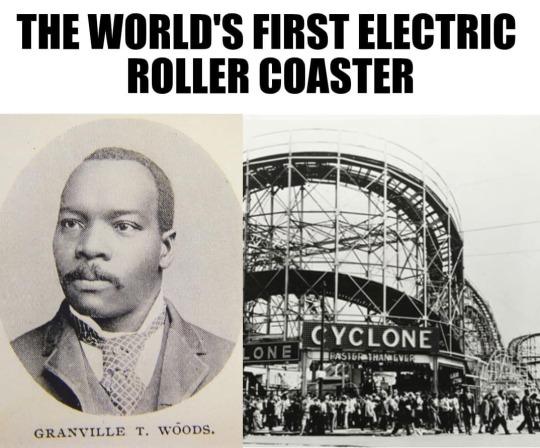
THE WORLD'S FIRST ELECTRIC ROLLER COASTER
Granville T. Woods (April 23, 1856 – January 30, 1910) introduced the “Figure Eight,” the world's first electric roller coaster, in 1892 at Coney Island Amusement Park in New York. Woods patented the invention in 1893, and in 1901, he sold it to General Electric.
Woods was an American inventor who held more than 50 patents in the United States. He was the first African American mechanical and electrical engineer after the Civil War. Self-taught, he concentrated most of his work on trains and streetcars.
In 1884, Woods received his first patent, for a steam boiler furnace, and in 1885, Woods patented an apparatus that was a combination of a telephone and a telegraph. The device, which he called "telegraphony", would allow a telegraph station to send voice and telegraph messages through Morse code over a single wire. He sold the rights to this device to the American Bell Telephone Company.
In 1887, he patented the Synchronous Multiplex Railway Telegraph, which allowed communications between train stations from moving trains by creating a magnetic field around a coiled wire under the train. Woods caught smallpox prior to patenting the technology, and Lucius Phelps patented it in 1884. In 1887, Woods used notes, sketches, and a working model of the invention to secure the patent. The invention was so successful that Woods began the Woods Electric Company in Cincinnati, Ohio, to market and sell his patents. However, the company quickly became devoted to invention creation until it was dissolved in 1893.
Woods often had difficulties in enjoying his success as other inventors made claims to his devices. Thomas Edison later filed a claim to the ownership of this patent, stating that he had first created a similar telegraph and that he was entitled to the patent for the device. Woods was twice successful in defending himself, proving that there were no other devices upon which he could have depended or relied upon to make his device. After Thomas Edison's second defeat, he decided to offer Granville Woods a position with the Edison Company, but Woods declined.
In 1888, Woods manufactured a system of overhead electric conducting lines for railroads modeled after the system pioneered by Charles van Depoele, a famed inventor who had by then installed his electric railway system in thirteen United States cities.
Following the Great Blizzard of 1888, New York City Mayor Hugh J. Grant declared that all wires, many of which powered the above-ground rail system, had to be removed and buried, emphasizing the need for an underground system. Woods's patent built upon previous third rail systems, which were used for light rails, and increased the power for use on underground trains. His system relied on wire brushes to make connections with metallic terminal heads without exposing wires by installing electrical contactor rails. Once the train car had passed over, the wires were no longer live, reducing the risk of injury. It was successfully tested in February 1892 in Coney Island on the Figure Eight Roller Coaster.
In 1896, Woods created a system for controlling electrical lights in theaters, known as the "safety dimmer", which was economical, safe, and efficient, saving 40% of electricity use.
Woods is also sometimes credited with the invention of the air brake for trains in 1904; however, George Westinghouse patented the air brake almost 40 years prior, making Woods's contribution an improvement to the invention.
Woods died of a cerebral hemorrhage at Harlem Hospital in New York City on January 30, 1910, having sold a number of his devices to such companies as Westinghouse, General Electric, and American Engineering. Until 1975, his resting place was an unmarked grave, but historian M.A. Harris helped raise funds, persuading several of the corporations that used Woods's inventions to donate money to purchase a headstone. It was erected at St. Michael's Cemetery in Elmhurst, Queens.
LEGACY
▪Baltimore City Community College established the Granville T. Woods scholarship in memory of the inventor.
▪In 2004, the New York City Transit Authority organized an exhibition on Woods that utilized bus and train depots and an issue of four million MetroCards commemorating the inventor's achievements in pioneering the third rail.
▪In 2006, Woods was inducted into the National Inventors Hall of Fame.
▪In April 2008, the corner of Stillwell and Mermaid Avenues in Coney Island was named Granville T. Woods Way.
503 notes
·
View notes
Text

For the Benefit of All: Assistive Tech Developed from NASA Tech
What do modern cochlear implants and robotic gloves have in common? They were derived from NASA technology. We’ve made it easier to find and use our patented inventions that could help create products that enhance life for people with disabilities.
October is National Disability Employment Awareness Month, which highlights the contributions of American workers with disabilities – many of whom use assistive technology on the job. Take a look at these assistive technologies that are NASA spinoffs.

Low-Vision Headsets
The Joint Optical Reflective Display (JORDY) device is a headset that uses NASA image processing and head-mounted display technology to enable people with low vision to read and write. JORDY enhances individuals’ remaining sight by magnifying objects up to 50 times and allowing them to change contrast, brightness, and display modes. JORDY's name was inspired by Geordi La Forge, a blind character from “Star Trek: The Next Generation” whose futuristic visor enabled him to see.

Cochlear Implants
Work that led to the modern cochlear implant was patented by a NASA engineer in the 1970s. Following three failed corrective surgeries, Adam Kissiah combined his NASA electronics know-how with research in the Kennedy Space Center technical library to build his own solution for people with severe-to-profound hearing loss who receive little or no benefit from hearing aids. Several companies now make the devices, which have been implanted in hundreds of thousands of people around the world.

Robotic Gloves
Ironhand, from Swedish company Bioservo Technologies, is the world’s first industrial-strength robotic glove for factory workers and others who perform repetitive manual tasks. It helps prevent stress injuries but has been especially warmly received by workers with preexisting hand injuries and conditions. The glove is based on a suite of patents for the technology developed by NASA and General Motors to build the hands of the Robonaut 2 humanoid robotic astronaut.

Smart Glasses
Neurofeedback technology NASA originally developed to improve pilots’ attention has been the basis for products aimed at helping people manage attention disorders without medication. The devices measure brainwave output to gauge attention levels according to the “engagement index” a NASA engineer created. Then, they show the results to users, helping them learn to voluntarily control their degree of concentration. One such device is a pair of smart glasses from Narbis, whose lenses darken as attention wanes.

Anti-Gravity Treadmills
A NASA scientist who developed ways to use air pressure to simulate gravity for astronauts exercising in space had the idea to apply the concept for the opposite effect on Earth. After licensing his technology, Alter-G Inc. developed its anti-gravity G-Trainer treadmill, which lets users offload some or all of their weight while exercising. The treadmills can help people recover from athletic or brain injuries, and they allow a safe exercise regimen for others with long-term conditions such as arthritis.

Wireless Muscle Sensors
Some of the most exciting assistive technologies to spin off may be yet to come. Delsys Inc. developed electromyographic technology to help NASA understand the effects of long-term weightlessness on astronauts’ muscles and movements. Electromyography detects and analyzes electrical signals emitted when motor nerves trigger movement. Among the company’s customers are physical therapists developing exercise routines to help patients recover from injuries. But some researchers are using the technology to attempt recoveries that once seemed impossible, such as helping paralyzed patients regain movement, letting laryngectomy patients speak, and outfitting amputees with artificial limbs that work like the real thing.
To further enhance the lives of people with disabilities, NASA has identified a selection of patented technologies created for space missions that could spur the next generation of assistive technology here on Earth.
Want to learn more about assistive technologies already in action? Check out NASA Spinoff to find products and services that wouldn’t exist without space exploration.
Make sure to follow us on Tumblr for your regular dose of space!
#NASA#space#tech#technology#spinoff#robotics#physical therapy#disability#disabled#accessibility#a11y#inventions
835 notes
·
View notes
Text
"Hey, buddy, you've been hogging the Supercharger® long enough," emits the carrier signal of a Tesla owner. They're right to be upset. Ever since they opened up their fancy DC fast chargers to every Tom, Dick, and Ford owner, what was once a hoity-toity elite parking lot full of American-made economy cars is now full of a bunch of weird shitbags trying to fill up their batteries.
My electric car? Pretty much the same as yours: a 1974 Plymouth Fury III, with the original smog-coughing low-compression 400-cubic-inch V8 engine replaced with nearly a metric ton of golf-cart batteries I borrowed from the local country club. Hey, they weren't using any of them in the middle of November when I cut through the fence. Not to mention it's unethical for anyone to hoard valuable resources that could be used to reduce emissions, such as I am doing (unless you count the fact that this vehicle is still, somehow, leaking 10w40 motor oil from somewhere.)
The system isn't perfect. For instance, the "fast charge" system is not particularly fast. This is because it's an old Canadian Tire 12-volt boat battery maintainer that I've riveted onto the hood, and tricked the Tesla system into talking to. As far as the computer inside it knows, it's just a really stupid SUV. Before you blame me for being a charge hog, you must also know this: it is keeping my decrepit Galaxy Note smartphone alive, which hasn't had a working battery in it since that whole airplane fire snafu. And in turn, that phone is playing an educational podcast, about climate destroyers. This, I believe, is what the Tesla owner is actually angry about, and not the fact that I have been "fast charging" for the last seventeen hours using a stolen credit card.
I ignore him. I have long ago learned that pedestrians talk a lot of shit, but are generally afraid to actually damage my car: an emergency tetanus shot, after all, is unpleasant and can cost upwards of $25. Walking back inside the donut store at which I am "parked," I ask the attendant to refill my bottomless coffee once more. Maybe I'll live here, I think. I don't want to go anywhere more than about five miles away from this charger from now on.
920 notes
·
View notes
Text



All Funk, No Punk - Still Hobart Brown
Gold chains instead of silver spikes. Gator shoes in place of thrifted boots. And an afro bigger than Hobie's -
Spider-Funk is Hobart Brown - Earth 831
Hobie Brown maybe Artie's chiller, rougher, and louder self - but somehow, they get on like a cop car on fire (or whatever the saying is).
And Artie Brown maybe Hobie's cockier, flirtier, and flashier self - but they just tell people they're twins.
Or at the very least - they call each other 'brotha' and 'bruv' all the time.
When people ask about the accent thing - you know, Artie being American, they say 'Ever seen The Parent Trap?'
[A LONG ASS post - Below is Artie's Origins, Fighting Style, Relationship to Hobie, and how he got recruited - All About the Brown Bros! Artie & Hobie, FunkPunk!]

It's Hobie 2 - Electric Bugaloo!
And just when Miguel thought he could only stomach one of them.
Though he calls himself the older brother, being born over a decade earlier, Artie is Hobie's less mature, more materialistic, but just as kind variant.
He's a pacifist instead of an anarchist - Full of Soul instead of bursting with Rock.
And he still hates cops.
Origins:
When Artie was drafted for the Vietnam War in 1969 - the first thing he did was burn his draft card. Then he joined the Black Liberation Army.
He wasn't the only one - Artie was part of the almost half a million draftees to do so.
And then President Osborn was elected.
To fill the gap in enlistment, Osborn came up with a solution.
V.E.N.O.M - A highly toxic, unfeelingly aggressive, and wildly bloodthirsty symbiote. A solution to the protests and draft dodgers.
Engineered by Oscorp - if you didn't induct yourself as a soldier, the V.E.N.O.M would make you one. And suddenly his friends were disappearing one by one.
A subtle but sudden-onset disease, the V.E.N.O.M variant was nearly undetectable, very persuasive, and incredibly effective.
More primal than animalistic, the symbiote's function didn't raise one's bloodlust, - instead it lowered, and at worse cancelled, your empathy.
The symbiote subtly normalized dehumanization - attacking neurons in the cerebral cortex to destroy one's capability of empathy, compassion, and at times - recognizing faces. Able to follow commands without a second thought - the perfect soldier.
Convincing the host of necessary order and their own biological superiority, over the course of 72 hours the host would lose their ability to recognize the people around them as anything other than sub-human.
In 138, V.E.N.O.M turns you into an animal.
In 831, V.E.N.O.M turns everyone around you into an animal.
It could make anyone into an unfeeling, unrelenting soldier - no guns needed.
The best of them got sent overseas to the War - and the rest, he turned on the people, hunting down all those who dared to dodge their call.
While on tour in DC, Artie was bitten by a radioactive spider, as he attempted to burn draft papers at a government facility.
He burned the papers. Plus he got some sick powers out of it. Plus Plus he gets to beat up The National Guard on a weekly basis. Ain't that a score.
And Hobie may hate the name Spider-Punk (or so he says), but Artie loves being Spider-Funk.
He calls them Funk & Punk. Hobie calls them that too, but like in a cool ironic way.

Artie & Hobie:
Personality:
Hobie knows that Artie is going through his 'Pavitr Phase', so he cuts him some slack. Artie's only been Funk for a year and some change.
He's got more Ws than Ls, so he's always one to be a bit cocky and reckless - though never at anyone's expense.
He's more talkative than Hobie - and WAY more flirty than Hobie, ready to wink at anyone willing to stare.
Like Hobie, Artie has his own groupies. And the pair on campus do get stares (and whispers. and giggles); Two 6'5 dudes with enough hair to cause an eclipse, walking around in loud ass boots, they're sure to draw attention.
Something Artie loves.
Artie considers himself a Ladies' Man. And a Man's Man. And what gender you have to offer really. (He's still a 'Hobie' - he doesn't discriminate)
He's got a waterbed in his boathouse, shag carpets, and wine at the ready. He loves sweet-talking people, and showering them in compliments. Whereas Hobie's love language is Physical Touch, Artie's is Words of Affirmation.
But all Hobie has to do is open his mouth and Be British and suddenly Artie's date is swooning and he's like 'Brotha, I'mma need you to shut the hell up for a second right quick.'
If you hang out with them, get ready for Hobie hanging off your shoulder, while Artie is in your ear complimenting your outfit.
Fighting:

Artie's fighting style is a lot more fluid than Hobie's with a lot of martial arts involved - similar to blaxploitation movies of the era.

Hobie thinks he looks bloody ridiculous meanwhile Artie is like 'if dem damn jeans weren't so tight maybe you could get like me and have some flair in your fight, my man.'
He also has an INCREDIBLY MEAN backhand.

Ideology:
The two of them are fairly close, hanging out with each other a lot. Though the two of them are fairly different. Artie is far more pacifist than Hobie, but that doesn't mean he's above violence.
He's just not one to talk about it, or threaten it. He's more of the 'let people talk - don't start none, won't be none'. Camp - and he'll almost never throw the first punch. Though he absolutely considers intimidation, selling hard drugs, and fucking with the general population 'starting some'.
Their ideology may clash heads everyone once in a while, but they hardly ever fight. At all. Instead, they have frequently heated, in-depth debates.
Artie may not be as radical or educated on things as Hobie, plus Hobie has ten years of extra history to pull from, but the two of them do it often, and it keeps them spry.
The only problem is, they get so into it, it SO HARD to understand what they're saying. Accents, slang, cutting each other off, roping other people into the conversation to back them up. It's WILD.
Artie is a lot more materialistic than Hobie. Not as critical of capitalism, Artie likes to game it rather than complain about it.
Unlike Hobie, Artie LOVES the finer things in life, and spoiling those around him. He likes gold over silver, and wears more rings than spikes.
He's a bit full of himself, and he carries a rag in his pocket to whip blood off his nice white boots. Something Hobie wouldn't be caught DEAD doing.
And Hobie clowns him for it everytime. Artie doesn't care. 'True playas never play sloppy.'
But how can he afford all of this? Well,
He's not as uhh,..honest as Hobie. But he has a heart of gold (get it?). And he never lies just to lie - if he's doing it, it's probably for work, or to Miguel, because he does not respect Miguel.
Artie be stealing. He's a master at sleight of hand. If it's a big corporation, it's free game. He never steals money - but to put it concisely: He's a smooth mfer.
He likes gold - he thinks it looks nice. But he knows for a fact that the worth of it is completely manufactured my human and capitalism, and that it's literally just a pretty metal.
He knows that paying hundreds for a chain or gold is exploitative, especially when it's stolen to begin with. So to him, it's justifiable, gimmie.
He also does it mostly for fun, a magic trick - in the same way Hobie makes stuff 'disappear' while talking to Miles, and doing hand tricks.
Artie does that, but more often, and more skillfully.
He doesn't do it all the time, but the first time he did it in front of Hobie - snatching Hobie's homemade watch of his wrist - Hobie was genuinely surprised.
Mostly he does it to make things disappear from your hand, parts he finds lying around, and playing pranks on people like Miguel. Generally, just being a lil shit.
He's a sweet-talker and a big steppa.
Unlike Hobie, Artie knows better than you force his way in. Artie slides in. He can talk them in to anywhere.
He'll pretend to be someone else, pretend to know someone else, steal passes and key cards to get in, and try to attack from the shadows when he can.
In battle, Spider-Punk is the louder, chattier, more immature one. And Spider-Funk is the chiller, sarcastic one.
Like twins, the two of them have their own in-jokes, and they hang at each other's places all the goddamn time. Though they live in different universes and decades, Artie & Hobie are kinda a package deal.
They may not always be together - they both got their own shit to do and they're not actually brothers - but if you hang with one, it's only a matter of time before you meet the other.
"Why is your brother American?"
"Divorce." - "Adoption."
........
"Adoption." - "Divorce."
"One of you or the both of you are lying."
Diane & Artie & Annie -
[This section is about my main OC Disco-Spider Diane, and her variant Annie P. Disco-Spider is Hobie's....something and they are happily....a something]
Every Hobart needs his Diane, and Artie is no different.
Artie & Diane:
And like usual, it all starts at the beginning.
Diane was the one to recruit Artie - because of course she was. And Lyla had told her two things: He was a guitarist, and his name was Artie. That's all she needed to know.
Lyla wanted it to be a surprise.
She snuck back stage to his show, brushed off the nearly palpable feeling of deja vu in the air, broke into his dressing room, and then tried to flirt him into joining the Society. Easy peasy.
Diane is a very oblivious woman. They spoke for nearly 10 minutes - and Artie decided to hear her out. He sat down on the couch in his dressing room, pulled back his hair and-
Diane goes -


"Hobie??? Is that you?! Oh my goodddd, you look so cute! Your hair!! Hobarrrrt - Why you ain't say nothing, had me standing here doing all this."
Speech completely forgotten. Mind you, she still hasn't explained anything. Diane is destined to freak out every Hobart she meets.
Artie is starting to think he should stop flirting with weird ass groupies that break into his dressing room.
Diane takes out her watch, the watch he doesn't know she has. She pulls up Lyla, the AI he doesn't know she has. And Diane asks her -
"Lyla! Does Artie stand for-"
"It does!"
"Oh my god!!! That makes this SO much easier! You're soo sweet, awww!!"
"You know I saw the mission and thought of you-"
"Am I on drugs right now?"
Needless to say - Diane's recruitment was successful.
Diane and Artie actually get on well, really well. Like weirdly well.
Artie and Diane are both extroverted, flirty, and a bit full of themselves. They're expressive, and more into their hair than they're willing to admit. They're perfect for each other - and people notice.
And Diane finds it a TAD BIT WEIRD

I mean, the differences between her and Hobie is what Diane loves about them - they're like sugar and spice, PB and J.
Sometimes Artie and Diane may accidentally finish each other's sentences - and Diane will be like 'Hey don't do that :)'. Other times, Artie will playfully be like 'Why are you standing so close to me, mama?' Just to piss her off.
Of course, Diane thinks he's 'cute'. But not Hobie Cute. And unfortunately, he 'speaks American'.
Besides, Hobie is the only Hobart for her.
Artie is definitely into Diane, but more in the 'she's a catch I would go for' kinda way. He did hit on her a couple times early on in their situation - but once she made it clear that she was 'seeing Hobie', he took the hint.
There's no jealously there - Hobarts are incapable of it. In fact, he's kinda proud the only other guy who could pull the hot girl is ..another him.
Now, Artie is a lot more like a big brother, kinda like the ones Diane grew up with in the Panther's house.
He's protective of her, in a 'Be mean to her and I'll deliver an ass whoppin on a plate' way. He thinks she's cute in the way a platonic sense, and finds her groupie mode to be as amusing as it is adorable.
It's ironic though that his ACTUAL girlfriend is - well, Diane's Opposite.
Artie & Annie:
[This section is shorter, and will be longer in Annie's post]
Diane Pastors is Annie P. is Mod-Spider.
Artie's girlfriend, Annie is the farthest thing from Diane while somehow still being just as big of a diva.
An avid feminism campaigner and modern woman, she would never be caught DEAD hanging off of Artie like that. And she can't stomach Diane all that much.
Hobie, Annie HATES. And not in a coy way. She thinks he's obnoxious - she calls him a poseur. She thinks he's a scrub.
Her & Artie are in a committed relationship - officially boyfriend and girlfriend. And instead of Annie, Artie is the one who wears her name on a chain.

Just like Diane and Hobie, Annie and Artie have a musical duo - called ModFunk.
We're almost done I PROMISE.~~~~~~~~~~~~~~~~~~
Random Details:
Artie's design is an inverted version of Hobie's, but it's also inspired heavily by Jimi Hendrix, mainly this photo on the left.


Right is an example of Artie's Style. His universe has a paint-marker aesthetic, a lot more colorful and soft than Hobie's, with dripping paint and splatters, but it tones down a lot - like Gwen's.
Artie plays Soul, Jazz, and Funk.
He has a band with his version of Daredevil, Felicia Hardy, and Captain Anarchy.
Artie has killed cops - and soldiers before. But he doesn't see it as a big deal. He hates cops, but he doesn't focus on it. He doesn't discriminate. Ass Whoopin's for everybody.
He DOES pull his hair back, his face isn't covered all the time. Maybe 80% of the time.
He can get around with Spidey Sense, so he doesn't care much - he loves his fro and is always picking it out.
He Pavitr are like best friends. Pavi and The Brown Twins get LOUD AS HELL when all together.
Gwen thinks he's an absolute goofball - So Artie tries his best to make her laugh. She seems like she needs it.
When not on stage and in battle, he prefers to play an acoustic guitar, which Hobie doesn't like playing. His acoustic is also blue.
Him and Hobie can play on each other's guitars, but it sounds very trippy, and VERY VERY weird, abnormally so.
If their heads are covered, or hair done like each other's, they can seamlessly pass as each other.
Hobie SUCKS at an American accent - but somehow, he can mimic Artie's perfectly.
It's the same for Artie - sucks at British, but can speak like Hobie.
He loves chocolate candy bars, Hobie likes fruity candy.
They do write songs together and go to each others shows, though they don't ever really perform together.
They wrestle A LOT
Artie is a genius as well, and they work on mechanics together, Artie is great at math specifically.
He and Hobie do each others hair care and help oil each other's scalps.
~~~~~~~~~~~~~~~~~~~~~~~~~~~~~~~~~
So uh.....that's Artie :) The guy
If you made it this far THANK YOU THANK YOU SO MUCH FOR ENTERTAINING ME - Artie platonically gives you a red rose.
ALSO TELL ME Why I tried to draw him like Jimi Hendrix But he looking like the Jackson 5 IM SO SORRY YALL
Here's OG Hobie as a thank you! Just imagine two Hobarts standing on either side of you both tall and with big hair and touchy and talkative as fuck Diane is living the DREAM let your OCs be happy
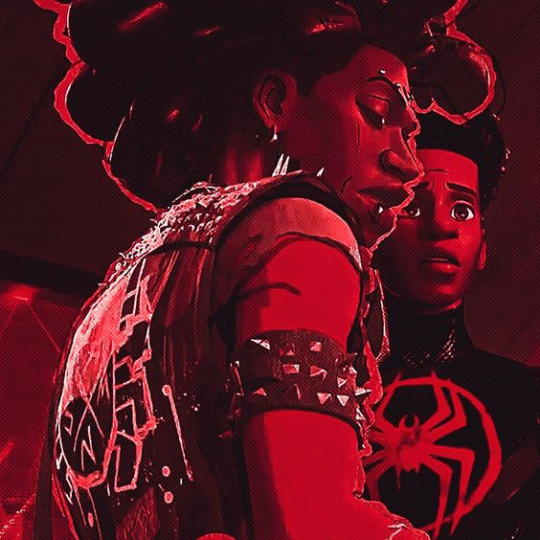


Bye.
#Here's my special guy#I tried giving Jimi Hendrix but I got Jackson 5#NO PROOFREAD NO IM NOT DOING IT!#IM SOOOO HAPPY TO BE DONE WIHT ONE OF THESEEE OH MY GOOODDDDDD#spiderman#atsv#spider man#marvel#across the spiderverse#hobie brown#spider punk#spiderpunk#spidersona#spidersonas#hobie brown x oc#hobie x oc#hobie brown sona#discospider#disco spider#funk spider#funkspider
656 notes
·
View notes
Text
Things Biden and the Democrats did, this week #18
May 10-17 2024
The Justice Department endorses lifting many restrictions on marijuana. Since the 1970s marijuana has been classified as a Schedule I controlled substance, the most restrictive classification for drugs that are highly addictive, dangerous and have no medical use, like heroin. Schedule I drugs are nearly impossible to get approval for research studies greatly hampering attempts to understand marijuana and any medical benefits it may have. The DoJ recommends moving it to Schedule III, drugs with low risk of abuse like anabolic steroids, and testosterone. This will allow for greater research, likely allow medical marijuana, and make marijuana a much less serious offense. President Biden welcomed DoJ's decision, a result a review of policy he ordered. Biden in his message talked about how he's pardoned everyone convicted of marijuana possession federally. The President repeated a phrase he's said many times "No-one should be in jail just for using or possessing marijuana,"
The Department of Interior announced no new coal mining in America's largest coal producing region. The moratorium on new coal leases has been hailed as the single biggest step so fair toward ending coal in the US. The Powder River Basin area of Wyoming and Montana produces 40% of the nations coal, the whole state of West Virginia is just 14%. The new rule is estimated to reduce emissions by the equivalent of 293 million tons of carbon dioxide annually, the same as taking 63 million gas powered cars off the road.
Vice-President Harris announced that the Biden-Harris Administration had broken records by investing $16 billion in Historically Black Colleges and Universities. Harris, a graduate of Howard University, is the first President or Vice-President to have gone to a HBCU. The Administration's investment of $900 million so far in 2024 brought the total investment of the Biden-Harris administration in HBCUs to $16 billion more than double the record $7 billion. HBCUs produce 40% of black engineers, 50% of black teachers, 70% of black doctors and dentists, and 80% of black judges. HBCUs also have a much better record of helping social mobility and moving people out of generational poverty than other colleges and universities.
The Department of Housing and Urban Development announced $30 billion dollars in renewal funding for the Housing Choice Voucher Program. The program supports 2.3 million families that are in need of housing with vouchers that help pay rent. This funding represents a $2 billion dollar increase over last year.
The Department of Agriculture announced $671.4 million in investments in rural infrastructure. The money will go to project to improve rural electric grids, as well as drinking water and wastewater treatment infrastructure. The money will go to 47 projects across 23 states.
HUD announced a record breaking $1.1 billion dollar investment in Tribal housing and community development. HUD plans just over 1 billion dollars for the Indian Housing Block Grant (IHBG) program. This is a 40% increase in funding over 2023 and marks the largest ever funding investment in Indian housing. HUD also is investing $75 million in community development, supporting building and rehabbing community buildings in American Indian and Alaska Native communities.
The Department of Transportation announced $2 billion in investments in America's busiest passenger rail route, the Northeast Corridor between Washington DC and Boston. This is part of a 15 year, $176 billion plan to rebuild the corridor’s infrastructure and prepare for increased ridership and more trains. So far investments have seen a 25% increase, 7 million riders, over figures last year. a fully funded plan would almost double Amtrak service between New York City and Washington, D.C., and increase service between New York City and Boston by 50%. It would also allow a 60% increase in commuter trains.
HUD announced plans to streamline its HOME program. Currently the largest federal program to help build affordable housing, the streamlining of the rules will speed up building and help meet the Biden Administration's goal of 2 million new affordable housing units. HUD announced last week $1.3 billion dollars for the HOME program, which built 13,000 new units of housing in 2023 and helped 13,000 families with rental assistance
The Department of Interior announced $520 million in new water projects to help protect against drought in the western states. The funding will support 57 water related projects across 18 western states. The projects focus on climate resilience and drought prevention, as well as improving aging water delivery systems, and improving hydropower generation.
The Departments of Agriculture and HHS have stepped up efforts to wipe out the H5N1 virus prevent its spread to humans while protecting farmers livelihoods. The virus is currently effecting dairy cattle in the Texas panhandle region. The USDA and HSS are releasing wide ranging funds to help support farms equipping workers with Personal Protective Equipment, covering Veterinary costs, as well as compensating farmers for lost revenue. HHS and the CDC announced $101 million in testing an monitoring. This early detection and action is key to preventing another Covid style pandemic.
The Senate confirmed Sanket Bulsara to a life time federal judgeship in New York and Eric Schulte and Camela Theeler to lifetime federal judgeships in South Dakota. This brings the total number of judges appointed by President Biden to 197. For the first time in history the majority of a President's judicial nominees have not been white men.
Bonus: The 11th Circuit Court of Appeals ruled that transgender health insurance exclusions were illegal. The ruling came from a case first filed in 2019 where an employer refused to cover an employee's gender affirming surgery. The court in its ruling sited new guidance from the Biden Administration's Equal Employment Opportunity Commission that declared that Title VII of the Civil Rights Act protects trans people in the work place. These kinds of guidelines are often sited in court and carry great weight.
#Thanks Biden#Joe Biden#democrats#american politics#marijuana#marijuana legalization#climate change#climate action#HBCU#howard university#affordable homes#native american#Trans rights#judges#h5n1
212 notes
·
View notes
Text
I’m reading a book on the history of invention and how our cultural views of masculinity vs femininity affect our progress and holy shit if women’s needs and preferences were taken seriously we would’ve been using electric cars since the late 1800s instead of just starting to use them now.
In “Att uppfinna världen” (Mother of Invention in the English translation) by Katrine Marçal there is a chapter dedicated to the process of inventing the modern automobile, where I read that there were multiple ways of constructing a car when the invention was relatively recent, as the field was still open to experimentation. Petrol wasn’t an obvious choice for fuelling the engine – in fact, around the year 1900 a third of all cars in Europe were electric cars, and the percentage was even bigger in America. Electrically powered cars were superior to petrol-fuelled ones in many ways: they were quieter, didn’t expel smelly gas, much safer and more reliable, and easy to start and control from the driver’s seat. Cars fuelled by petrol, on the other hand, were loud, more unreliable and required a lot more maintenance, and to start the engine one had to do some serious manual labour involving a crank – which would often leave you sweaty and with oil stains on your clothes, plus a constant risk of causing an explosion if you weren��t careful enough. Naturally, women preferred the former, being more convenient and comfortable and thus more suited to their travel needs, whereas the petrol-fuelled car was marketed as the more adventurous, macho choice for men.
The one downside to electric cars was that the battery didn’t last for longer journeys, which in the case for women wasn’t that much of a problem since the majority mainly just made trips within the city or town. This was also an issue that could’ve been fixed, and there were many plans to do so, mainly infrastructure-related ones like battery-switching stations and developing better battery solutions. There were even plans for a net of rentable electric cars for anyone to use, and electric trains, trams, and taxis for public transport (seems very ahead of its time, doesn’t it? A much more environmentally conscious system than our good ol’ “everyone has one or multiple cars that individually expel copious amounts of greenhouse gasses” method). However, investments were too few since the male-dominated society deemed these “women’s cars”. After all, a real man isn’t soft, safe and comfortable – he cranks his own car to life and makes a lot of noise as he travels. A report from 1916 by the magazine Electric Vehicle stated that “The thing that is effeminate, or that has that reputation, does not find favor with the American man. Whether or not he is ‘red-blooded’ or ‘virile’ in the ordinary physical sense, at least his ideals are. The fact that anything from a car to a color is the delight of the ladies is enough to change his interest to mere amused tolerance.”
Like, it’s insane that values such as comfort, safety and convenience were seen as “feminine” and thus dismissed, leading to petrol-fuelled cars completely taking over the market in the end. Imagine what the world would’ve looked like if women were the standard instead of men. It really pains me to think how much damage we’ve done to the planet just because of men’s stubborn macho ideals.
(a lot of this research is quoted from The Electric Vehicle: Technology and Expectations in the Automobile Age by Gijs Mom, a book I’m now very interested in reading in full)
#feminism#radical feminism#climate change#environment#radfem#electric cars#fun fact is that eventually some of these aspects (such as comfort) were developed in petrol cars as well#but by then they were already dominating the market and there was no chance people would make the switch back to electric
3K notes
·
View notes
Text



Grampa's Antique Fan (2015 vs 2024 Edit)
As a young man, after coming home from the Second World War, my grampa got a job as an electrician for Emerson Electric. He didn't work on the actual electrical products. He just maintained the electrical systems that power the tools to make electrical components.
It was a "I heard you need electricity for your electricity" type deals.
The company was founded in 1890 in nearby Ferguson, Missouri by John Wesley Emerson. He was a Union commander in the Civil War and a lawyer and then a judge and then an author and then a historian... so he was clearly qualified to run one of the first electronics companies. (This is currently referred to as the "Law of Elon".)
Emerson (the company, not the dude) specialized in electric motors and was the first to stick their motors in a fan and sell them.
As you can see by the 4 protective fan guard loopies, these were very safe for kids to be around.
I mean, the biggest thing you could shove in there is a baby arm, which is the least important part of a baby. No baby heads were chopped off—which was the bar for consumer safety during that era.
Fans are rated by the volume of air they can push over a period of time and your average box fan can push about 1400 cubic feet per minute or "CFM". When this Emerson (the fan, not the dude) was produced they actually used "CCH" or cubic cubits per hour. Emerson (the dude) loved using odd standards of measurement much to the chagrin of his engineers.
Due to the small surface area, weak angle of attack, and heavy metal blades, this electronic beast could only push a baker's dozen cubic cubits per baker's hour—which was a confusing metric of time because people were very superstitious and they refused to put the 13 on the baker's clocks. They just left a mysterious blank void after the 12 and apparently several people had existential crises during the baker's hour. Some were institutionalized for a rare condition called Time Delirium.

Thankfully Emerson Electric was able to provide the electroshock therapy devices that cured several patients. This was achieved by erasing the memory of the traumatic time delirium events along with a few other unimportant details like what they did last Tuesday and their mother's name and one engineering degree that the guy wasn't even using.
My dad actually got the fan working and let me tell you... that bad boy could really work up a gentle breeze...
...if you stood behind it and blew.

And that fine American-made electric fan motor was just as quiet as a leaf blower on Saturday morning.
Over the last century, Emerson was bought and sold and bought and sold.
And bought and sold and bought and sold.
Was that 7?
Eh, close enough. We'll call it a baker's 7.
They changed their product line countless times over their 130+ years of existence. After fans they pivoted and made electric meat grinders. To this day, no one know what inspired that decision.
Currently, they make radar avionics and are majority-owned by the private equity firm, Blackstone. Which is a totally non-evil sounding name they chose for their company-eating empire. Please ignore that the CEO was one of Trump's policy strategists. This is a non-evil company with a non-evil name run by non-evil people, okay?
Despite Emerson Electric having to settle a baker's gross of lawsuits involving a few lightly scalp'd babies, they maintain a Fortune 500 status and are still headquartered in Ferguson.
They occupy one of the most boring ass buildings ever constructed.
Just rectangles all the way down.


That architect told every angle to get rect.
Of course, I forgot all of this cool history and sold this fan in the estate auction. I suppose it is a good thing I got a nice photograph to help assuage my current feelings of guilt. I mean, it is not baby scalping, time delirium guilt—but I would feel better if I knew my gramp-gramp's fan was in a good home with 0 babies.
#photography#re-edit#some of this stuff is actually true#I have yet to fall asleep and so I wrote this#can you tell I haven't slept?
72 notes
·
View notes
Text
Cuba broke through its colonial domination into freedom. From the mountains of the Sierra Maestra and from the cities came the torrential power of the people against the US-backed dictator Fulgencio Batista. ‘The revolution is made in the midst of danger’, said Fidel Castro as he led his band of peasant-soldiers from the hills into the cities. They had triumphed against remarkable odds. Quickly, the revolutionaries passed a series of decrees – just as the Soviets had – to draw the key classes to their side. To draw in the urban Cubans, the revolutionaries cut rents by half – sending a strong signal to the bourgeoisie that they had a different class outlook. Then, the revolutionaries took on the United States, whose government held a monopoly over services to the island. Telephone and electrical companies – all American – were told to reduce their rates immediately. Then, on May 17, 1959, the Cuban government passed its agrarian reform – the keystone of the revolutionary process. Land holdings would be restricted so that no large landowners could dominate the landscape and so that the US sugar industry could not strangle the hopes of the island. The most radical part of the reform was not the land ceiling itself, but the logic that agrarian reform would transform the stagnation of the Cuban economy and its dependence upon the United States. The law clearly stated that, from a socialist standpoint,
«The agrarian reform has two principal objectives: (a) to facilitate the planting or the extension of new crops with the view of furnishing raw materials to industry, satisfying the food requirements of the nation, increasing the export of agricultural products and, reciprocally, the import of foreign products which are essential to use; (b) to develop the interior market (family, domestic) by raising the purchasing power of the rural population. In other words, increase the national demand in order to develop the industries atrophied by an overly restrained consumption, or in order to create those which, for lack of customers, were never able to get started among us.»
The revolutionaries wanted to diversify their sugarcane island, produce food security for their people, remove people from desperation, increase the ability of people to consume a range of goods and engineer a people-centred rather than an export-centred economy. Long before Castro announced his commitment to communism, the regime had already developed a carefully thought out socialist platform.
The United States of America, having overthrown the radical nationalist government in Guatemala in 1954, was eager to repeat the task in Cuba in 1959. An embargo came swiftly, as did every form of humiliation possible against the Cuban people. The Cuban economy was structured around dependency to Washington, with the sugar bought by the US firms and with the island turned into a playground for American tourists. Now, the US decided to squeeze this little island, only ninety miles from the US shoreline. Gunboats were readied, a failed invasion tried in April 1961 at the Bay of Pigs. Cuba was vulnerable but also protected by the deep roots of its revolution. But would this protection be sufficient? Could Cuba, alone, be able to survive the onslaught from the United States?
On February 5, 1960, a leader in the USSR and an Old Bolshevik – Anastas Mikoyan – came to Havana to join Fidel Castro at the opening of a Soviet scientific, cultural and technical exhibition. A week later, Mikoyan and Castro signed an agreement for the USSR to buy Cuban sugar at the world market price (in dollars) and provide credits for the Cubans to buy Russian goods. The USSR would subsequently buy almost all the Cuban sugar harvest, even as the Russian consumer market could very well have been supplied by beet sugar from within the USSR. Prices fluctuated, but, on balance, the Cubans were able to find a regular buyer to take over from the United States. The Russians also provided over a $100 million in credits toward the construction of Cuba’s chemical industry as well as trained Cuban technical and scientific workers in the USSR. Diversification of Cuba’s economy remained on the cards, although it became clear that it would not be an easy task. In August 1963, Castro announced that diversification, as well as industrialization, would be postponed. Cuba needed to concentrate on its sugarcane harvest to earn the means to survive the embargo.
On February 24, 1965, Che Guevara addressed the Second Economic Seminar of Afro-Asian Solidarity in Algiers, Algeria. He had come to talk about the economic problems for a revolution in a post-colonial country. Overthrowing the former colonizer was not enough, Che said, since ‘a real break’ is needed from imperialism for the new state to actually flourish and not remain in dependency. How could the post-colonial state survive a hostile economic climate? Who would buy its goods – mainly primary, unprocessed goods – at a fair price, and who would lend it capital at fair terms to develop? Capitalist banks and countries would not provide the post-colonial state, particularly a socialist state, with the means to break out of the trap of underdevelopment. Banks would lend money to a post-colonial state at rates higher than it would lend to a colonial power. Expensive money would only put the post-colonial state into further difficulty, as it would find it hard to service its debt and see its debt multiply out of hand. To prevent this situation, Che argued, the ‘socialist countries must help pay for the development of countries now starting out on the road to liberation’. Trade between socialist countries must not take place based on the law of value of capitalism, but through the creation of fraternal prices. ‘The real task’, Che said, ‘consists of setting prices that will permit development. A great shift in ideas will be involved in changing the order of international relations. Foreign trade should not determine policy, but should, on the contrary, be subordinated to a fraternal policy toward the peoples.’
China, in 1960, offered Cuba credit of $60 million without interest and without a timeline for repayment. This was an enviable loan. But the scale was much smaller than the Soviet assistance. By 1964, the USSR had provided Cuba with economic assistance valued at over $600 million, while the Eastern European countries offered several hundred million more in aid and assistance. The USSR had also trained over 3,000 Cubans in agronomy and agricultural mechanization as well as 900 Cubans as engineers and technicians. Che recognized the value of the Soviet ‘fraternal policy’ both in terms of the training and in the prices offered. ‘Clearly, we could not ask the Socialist world to buy this quantity of sugar at this price based on economic motives’, he had said in 1961, ‘because really there is no reason in world commerce for this purchase and it was simply a political gesture’.
Red Star Over the Third World, Vijay Prashad, 2019
93 notes
·
View notes
Text
[ 📹 Scenes of massive destruction and rescue efforts following an Israeli airstrike that targeted a residential home in the Al-Hasayna neighborhood, west of the Nuseirat Camp, in the central Gaza Strip, resulting in more than a dozen casualties, including women and children. ]
🇮🇱⚔️🇵🇸 🚀🏘️💥🚑 🚨
DAY 258: ISRAELI OCCUPATION UNPREPARED FOR WAR WITH HEZBOLLAH, ESTIMATED ONLY 50 HOSTAGES STILL ALIVE IN GAZA, OCCUPATION DESTRUCTION LEAVES 67% OF INFRASTRUCTURE DESTROYED, AMERICAN FLOATING PIER TO RESUME OPERATIONS ON THURSDAY, GENOCIDE GOES ON FOR YET ANOTHER DAY
On 258th day of the Israeli occupation's ongoing special genocide operation in the Gaza Strip, the Israeli occupation forces (IOF) committed a total of 4 new massacres of Palestinian families, resulting in the deaths of no less than 35 Palestinian civilians, mostly women and children, while another 130 others were wounded over the previous 24-hours.
It should be noted that as a result of the constant Israeli bombardment of Gaza's healthcare system, infrastructure, residential and commercial buildings, local paramedic and civil defense crews are unable to recover countless hundreds, even thousands, of victims who remain trapped under the rubble, or who's bodies remain strewn across the streets of Gaza.
This leaves the official death toll vastly undercounted as Gaza's healthcare officials are unable to accurately tally those killed and maimed in this genocide, which must be kept in mind when considering the scale of the mass murder.
"We are in a bad situation and are not ready for a real war," the CEO for Israel's government-owned Noga electric company, Shaul Goldstein said at the National Security Research Institute conference, held in Sderot in the occupied territories.
According to reporting in the Hebrew media, Goldstein was asked whether he could guarantee that their would be electricity in the Israeli entity in a future war with Hezbollah, responding that "the answer is no, but we will rely on Israeli resourcefulness. Israel is an energy island and we have to provide for ourselves - this is also our advantage, we are trained to work on the island."
"When I took office and began to investigate what the real threat is to the electricity sector, I asked - let's say a missile hits the electricity sector and there is a power outage for an hour, three hours, 24 hours, 48 hours, 72 hours and so on. What happens in such a situation to Israel?" Goldstein said, throwing back his own question, answering that "The bottom line is that after 72 hours - It is impossible to live in Israel."
"People don't understand how much our lives here depend on electricity," Goldstein continued, "I have 15 inspectors across the country, if there's a power outage then after 5 hours I don't have a phone to call him. Let's say he receives a carrier pigeon after 12 hours - the same inspector arrives at a gas station but there's no gas, Not a single gas station is working, at each station there is a queue of at least 30 km, if not more."
"All our infrastructure - the optical fibers, the ports - we are in a bad state. We are not ready for a real war. We live in a fantasy world in my eyes. The good thing is that we have invested a lot in protection, a joint team with the electric company as well."
Goldstein went on to say that "If Nasrallah [of Hezbollah] wants to take down Israel's electricity grid, he only has to pick up the phone to the person in charge of Beirut's electricity system, which looks exactly like Israel's. He doesn't even need a UAV filming, he calls a second-year electrical engineer and asks him where the most critical points are in Israel. Everything is on the internet, I'm not saying it here but anyone who goes on the internet discovers it."
"The recognition of our situation has not penetrated. If the war is postponed for a year, five years, a decade - our situation will be better," Goldstein added.
In response to Goldstein's statements, the CEO of the electric company Meir Spiegler stated that "Shaul Goldstein's statement regarding the lack of resilience of the electric network is irresponsible, disconnected from reality and creates panic among the public."
Similarly, the Occupation's Energy Ministry also responded, issuing a statement stating that "the Ministry wishes to clarify that the energy economy in Israel is robust and ready to deal with all possible scenarios."
The Ministry continued by saying that "since the beginning of the war, the Ministry has worked tirelessly to ensure the supply of energy to all citizens of the country, while carefully preparing for extreme scenarios and possible disruptions in supply. These efforts are carried out in close cooperation with the security authorities, with the aim of managing electricity demand, energy surplus and fuel stocks."
"The energy sector is organized according to the national reference scenario established by the National Emergency Authority (Rachel). There are several scenarios and the Alta scenario, where over 60% of households may be left without electricity for up to 72 hours, is an extreme scenario and the probability of this is low. However, the ministry is constantly working to reduce the likelihood of the scenario materializing and to prepare for an exit as quickly as possible from the Alta situation, should it indeed materialize," the Energy Ministry said.
"All the relevant bodies, including the Noga company and the electric company, are acting in accordance with the emergency scenario of Rahel and the professional guidelines of the ministry. The Ministry of Energy calls on the citizens of Israel to prepare in accordance with the directives of the Home Front Command, including equipping themselves with batteries, water and portable chargers, in order to ensure maximum preparedness in emergency situations," the Energy Ministry concluded.
In other news today, Thursday, June 20th, an American official, speaking with the Wall Street Journal, told the newspaper that the number of Israeli hostages still alive in the Gaza Strip is considerably less than the official estimates given in "Israel".
According to the official, whose conclusion is based upon Israeli intelligence, suggests the number of hostages still held alive in Gaza now numbers about 50, out of an original approximation of 120 hostages, suggesting that as many as 70 of the hostages have already died.
This number contradicts the data officially published by the Zionist entity, which suggests that just 43 abductees have been killed while in captivity.
So far, the bodies of 19 hostages have been returned to "Israel" in special operations, including 8 over the last three months.
In the meantime, in other news, two US officials spoke with Reuters today, telling the news organization that the floating dock built by the Americans is expected to resume operations to unload Humanitarian aid for starving and desperate Palestinians on Thursday.
The two officials, who spoke on the condition of anonymity, said the pier had been reconstructed on Wednesday after being temporarily dismantled last Friday due to poor sea conditions.
Humanitarian aid began arriving through the US-built pier on May 17th, while the United Nations said it had transported 137 truckloads of aid to its warehouses in Gaza, equivalent to about 900 tons of aid.
The Americans have also previously received criticism for supposedly allowing the Israeli occupation army to use the pier during its recent rescue operation to recover four Israeli hostages being held in Gaza, an operation in which the occupation army hid its soldiers using humanitarian aid trucks and which led to the deaths of 274 Palestinians and wounded another 698.
In further news, on Wednesday, the United Nations Relief and Works Agency for Palestine (UNRWA) said that the Zionist entity has now destroyed 67% of the civilian infrastructure of the Gaza Strip since the start of the Occupation's war of genocide, including roads, bridges, public facilities, parks, sewage systems and water wells.
The organization also noted that the Israeli occupation has completely destroyed all water wells and sewage pumps, and that the process of pumping sewage has been halted entirely for 8 months as a result of the Occupation's destruction of Gaza's infrastructure and the depletion of fuel, causing large areas of the Palestinian enclave to become flooded with sewage.
Further, the Palestinian refugee organization also mentioned that all areas of Gaza are without water following the Israeli occupation's destruction of 90% of the enclave's water wells by bombing, shelling and a lack of fuel.
Meanwhile, the Israeli occupation continues its random bombing and shelling of Gaza, leaving dozens of casualties across multiple sectors of the Strip.
According to local reporting, medical sources in Gaza told Palestinian media outlets that two female civilians were killed, and 12 others wounded, after Zionist warplanes bombed a house belonging to the Jadallah family, in the Al-Hasayna neighborhood of the Nuseirat Camp, in the central Gaza Strip.
Occupation artillery shelling also targeted neighborhoods east of the Bureij Camp, along with the Al-Maghazi Camp, in the central Gaza Strip, while also targeting central and western neighborhoods of the city of Rafah and east of Khan Yunis, in the south of Gaza.
Speaking with the local media, Mayor of Rafah, Ahmed Al-Sufi, said the Israeli occupation's destruction of the Rafah border crossing aimed to make the Gaza Strip unfit for life, further pointing out that the occupation forces continue to destroy entire residential squares in the Saudi neighborhood, and that the occupation has also destroyed more than 70% of Rafah's infrastructure.
The Zionist army also bombed a gathering of merchants and aid protection committees on Salah al-Din Street, east of the city of Rafah, killing at least 11 Palestinians and wounding up to 30 others, some of whom remain in critical condition.
Further Occupation artillery shelling targeted the vicinity of the Al-Alam roundabout, west of Rafah, killing two Palestinians and bringing the total number of Palestinians killed in the city today to 23.
The Israeli occupation forces are also continuing to advance with reinforcements towards the west of Rafah, while destroying entire residential blocks nearly constantly.
North of Gaza, the occupation army bombed a gathering of civilians in the Shujaiya neighborhood, east of Gaza City, killing one Palestinian and wounding at least five others.
Zionist fighter jets also bombed residential buildings on Kashko Street in the Al-Zaytoun neighborhood, southeast of Gaza City, resulting in the deaths of three civilians from the Aslim family.
Occupation warplanes also bombed in the vicinity of Jabal al-Rayes, east of the Al-Tuffah neighborhood, east of Gaza City, while two civilians were killed when an Israeli drone fired a missile at them.
According to medical sources with Al-Ahli Baptist Hospital said they'd received the bodies of two martyrs after being targeted by a missile from an Israeli drone on Al-Sikka Street, in the Al-Zaytoun neighborhood of Gaza City.
Meanwhile, in another attack, a Zionist reconnaissance drone fired a missile towards a gathering of civilians in the city of Deir al-Balah, in the central Gaza Strip, killing one Palestinian and wounding a number of others.
As a result of the Israeli occupation's ongoing war of extermination in the Gaza Strip, the infinitely rising death toll now exceeds 37'431 Palestinians killed, including over 15'000 children and upwards of 10'000 women, while another 85'653 others have been wounded since the start of the current round of Zionist aggression, beginning with the events of October 7th, 2023.
June 20th, 2024
#source1
#source2
#source3
#source4
#source5
#source6
#source7
#source8
#source9
#source10
#videosource
@WorkerSolidarityNews
#gaza#gaza strip#gaza news#gaza war#gaza genocide#war in gaza#genocide in gaza#genocide#israeli genocide#israeli war crimes#war crimes#crimes against humanity#israel#israeli occupation#occupation#palestine#palestine news#palestinians#free palestine#israel palestine conflict#gaza conflict#middle east#politics#news#geopolitics#international news#global news#war#breaking news#current events
122 notes
·
View notes